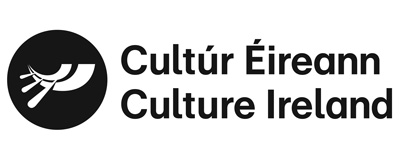Liam Gillick
Zhou Li
With support from

We are excited to announce our participation in the inaugural ART SG.
Our two-person booth brings together two very different practices, both equally committed to the development of contemporary abstraction. Zhou Li and Liam Gillick have attained international recognition for their expansive approaches to art, both of which enrich and deepen the potential for painting, sculpture, public art and education.
Zhou Li looks toward nature and traditional landscape painting, both Chinese and western, to generate lyrical studies of light, reflection, shadow and spacial dissolution. In contrast, Liam Gillick draws on the built environment, redeploying materials of contemporary urban architecture to create works that push minimalist abstraction into a new and pressing conversation.
about the artists
Liam Gillick
b. 1964, Aylesbury, England.

Liam Gillick
The Work Life Effect, Gwangju Museum of Art, Korea
25 February — 27 June 2021
One of the most important figures in international contemporary art, Liam Gillick works across diverse forms, including sculpture and installation. A theorist, curator and educator as well as an artist, his wider body of work includes published essays and texts, lectures, curatorial and collaborative projects, all of which inform (and are informed by) his art practice. Gillick’s line of enquiry is into conditions of production, including how it continues to operate in a post-industrial landscape: questions of economy, labour and social organisation are ongoing preoccupations. He is perhaps best-known for producing sculptural objects – platforms, screens, models, benches, prototypes, signage, or structural supports made from sleek modular Plexiglas and aluminium forms in standardised colours from the RAL system. These seductive materials speak the language of renovation and development: originally refined by the military, they’ve been widely used in corporate interiors since the 1990s, a decade in which post-industrial societies saw a shift from the collective to the individualist and privatised. Drawing upon engineering and industrial design as well as the legacy of hard-edged minimalism, these abstract quasi-architectural forms offer a critique of neo-liberal or corporate aesthetics, automation and endless (re)development. Focusing on secondary or incomplete forms such as screens and platforms, Gillick pinpoints structures which have a potential to destabilise the power of architecture and the architecture of power, creating generative spaces for discussion or the development of ideas.

Liam Gillick
Acceptance Screen
2014
powder-coated aluminium, transparent Plexiglas, Unique
wall-mounted screen structure
200 x 100 x 10 cm / 78.7 x 39.4 x 3.9 in

Liam Gillick has had solo exhibitions in many of the world’s leading museums, including Stedelijk Museum, Amsterdam; Kunsthalle Zürich; Museum of Modern Art, New York; Palais de Tokyo, Paris; Witte de With, Rotterdam; Kunst-und Ausstellungshalle der Bundesrepublik Deutschland, Bonn; MAGASIN, Grenoble; Museum of Contemporary Art, Chicago; Tate Britain, London and IMMA, Dublin. Recent solo projects include A Variability Quantifier (The Fogo Island Red Weather Station), The National Gallery of Canada | Fogo Island Arts | World Weather Network (2022); Blanc International Contemporary Space, Beijing; Gwangju Museum of Art, Korea; Sankt Peter, Cologne (all 2021); Madre Museum, Naples; Kunsthalle Wien, Vienna; Kunsthaus Zürich; Neues Museum Nürnberg; Potter Museum, Melbourne (all 2019); Contemporary Art Centre, Vilnius (2017–18); Fundação de Serralves, Porto (2016-17) and Dublin City Gallery The Hugh Lane (2016). Gillick has participated in major international exhibitions including Okayama Art Summit, Japan and the Venice, Shanghai, Istanbul, Singapore and Yinchuan biennales.
Zhou Li
b. 1969, Hunan, China.

Zhou Li
Landscape of nowhere: Water and dreams NO.9
2022
mixed media on aluminum plate
30 x 30 cm / 11.8 x 11.8 in
Zhou Li creates paintings, sculptures, installations and public art using mixed media, including oil paint, washes of ink, charcoal and cotton cloth. Her lyrical abstract painting capture her acute sensory observations of the world: lightness and shadow, solidity and dissolution, the sense of being. Building upon the history of European painting and the central tenets of traditional Chinese art (Qiyun, or atmosphere; brush stroke; colour and structural arrangement), Zhou Li harnesses both traditions to develop a distinct painterly language. Her free-flowing charcoal lines intersect with circles of paint in a gauzy, gossamer palette; these delicate, layered forms appear to float in space and follow a complex compositional arrangement that extends beyond the surface of the painting. Her paintings looks towards nature as a starting point, particularly the mountainous terrains of Southern China, but are imbued with a sense of much more: every brush stroke on the canvas is driven by her persistent query and pursuit of being.

Zhou Li
Lines No.1 2016
mixed media on canvas
200 x 300 cm / 78.7 x 118.1 in

Zhou Li has been the subject of solo exhibitions at Guangdong Museum of Art, Guangzhou; Château La Coste, Aix-en-Provence, France; White Cube, London; Hive Center for Contemporary Art, Beijing and Yuz Museum, Shanghai.
Current exhibitions include Tracing Peach Blossom Spring, Pingshan Art Museum, Shenzhen, China (solo, 2022); Greater Than Abstraction, Space 185 of Bund Art Center, Shanghai (18 December 2022 – 16 April 2023) and the 9th Bi-City Biennale of Urbanism/Architecture, Shenzhen (10 December 2022 – 16 April 2023).